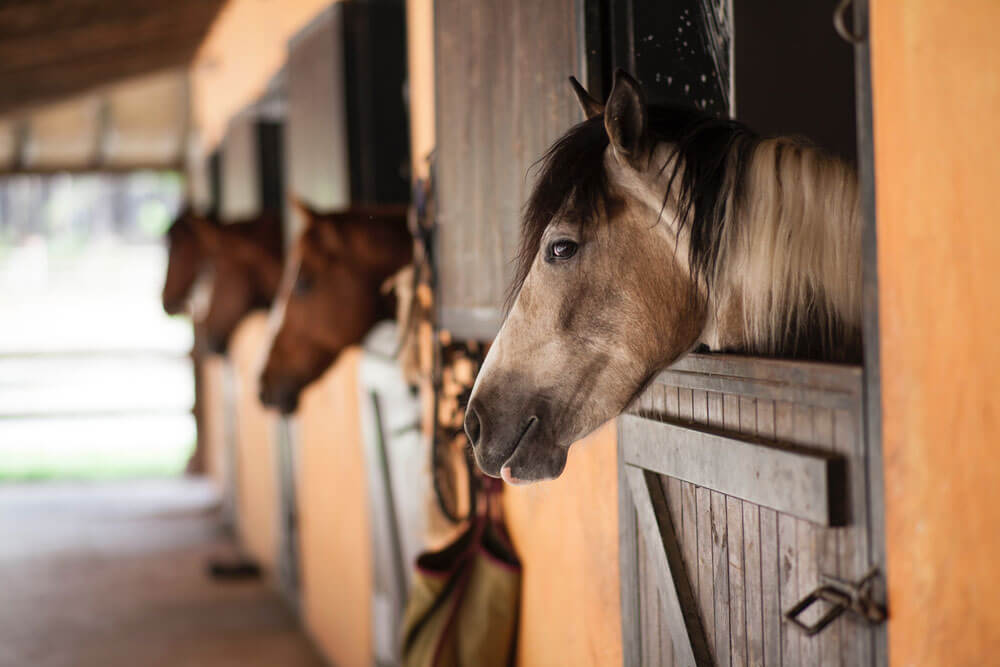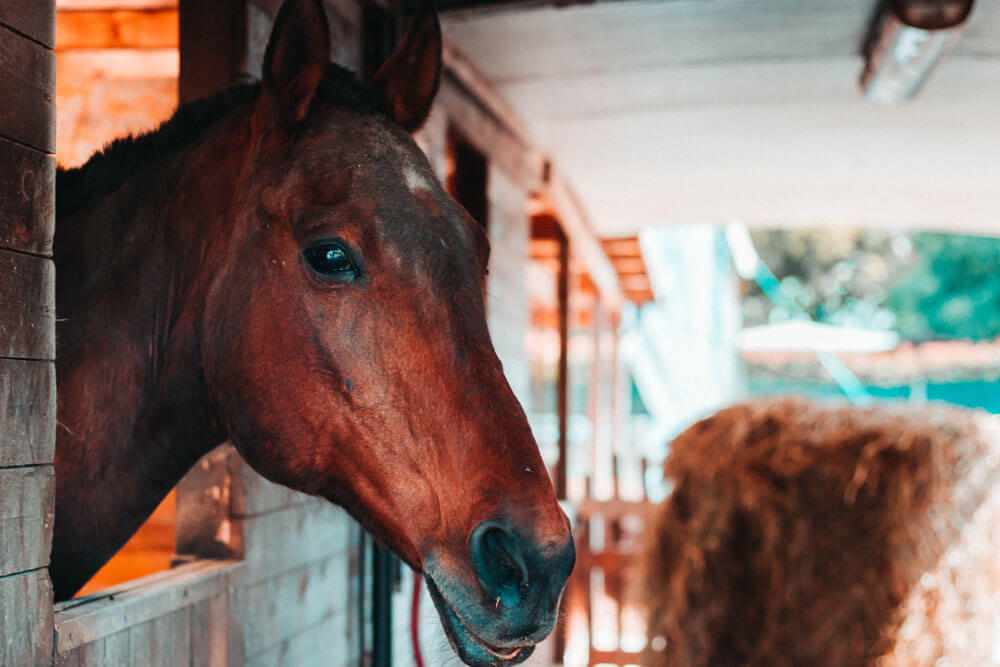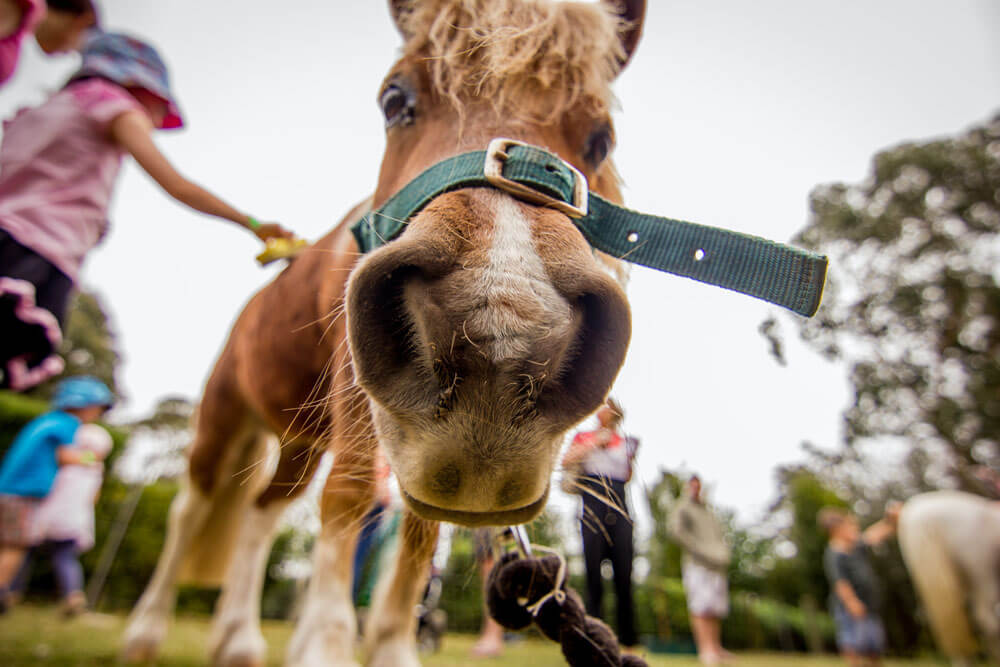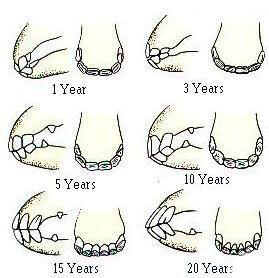A horse’s well-being is one of the most important aspects that every horseman has to constantly deal with. The more care you provide, the healthier and longer your companion will live. Of course, everyone’s time is limited so what’s the lifespan of a horse? How long do horses live?
It depends on a breed but in fact, many horses can live up to 30 years and even longer while still being ridden or driven. The truth is there’s no exact number as lots of nuances should be considered such as a breed of a horse, his health condition, conformation, and so on and so forth.
Wild Horses vs Domestic Horses Lifespan
Which horses live longer, wild or domestic? That might be surprising but in fact, domestic horses tend to have greater longevity. That is because wild horses eat poorly, their food is quite unbalanced as nobody takes care of their nutrition. Wild horses spend the most time in the open air and they freeze without a roof over their heads. They have to deal with bad weather conditions all the time thus they have to survive.
In addition, health care is immensely improving nowadays and horse care is not an exception. Horsemen look after their companions more carefully and thoroughly than they did several decades ago. Horses were typically used to drive carriages, take part in battles or work on a farm so they were overloaded but not treated well. But now these graceful creatures are usually used to take part in various equestrian sports or just for pleasure. As lots of new treatment methods and cures appear these days, these wonderful animals have a great chance of living healthy and wealthy.

If you are interested in how long domestic horses can live, you need to know the breed and purpose for your companion. Thoroughbred stallions reach the most advanced ages. After all, their value makes owners take special care. Proper nutrition and personal doctors guarantee the horse’s lifespan of 30 years and even more. Arabian horses can overtake all their relatives by 10 years.
Common domestic horses live for about 20-25 years. But this is true in a case if the owner is aware of how to take care of his horse duly. After all, treating an animal could be not crucial but harmful if you’re not a professional. If you don’t take care of the companion in time or do it with no care then you can worsen his condition. Moreover, don’t run the horse ragged. It’s reasonable to alternate resting and working periods.
Equestrian horses are very popular and eye-catching. Frankly, it’s hard to say how long these horses live. The lifespan of a horse directly depends on his sporting achievements. If a horse wins important competitions he can be purchased as a trophy. So he will be treated respectively. But those who couldn’t show impressive results might end up working as a training horse. Although it’s not so bad as many sports horses get injuries that can’t be treated.
Average Lifespan of Common Horse Breeds

As we already mention, different horses live for different years, this depends on many crucial factors. But we can list the approximate life expectancy of popular horse breeds. Here you go!
How Old Can Horses Live? (Lifespan by Breed)
Horse Breed
- American Saddlebred
- Arabian Horse
- Friesian Horse
- Gypsy Vanner
- Hackney
- Hungarian Warmblood
- Irish Sport Horse
- Morgan Horse
- Orlov Trotter
- Paso Fino
- Shetland Pony
- Thoroughbred Horse
Average Lifespan
- 25-30 years
- 25-30 years
- 16 years
- 25 years
- 30 years
- 25 years
- 30 years
- 30 years
- 30 years
- 25 years
- 30 years
- 25-28 years
Of course, the info presented is approximate and the lifespan can vary in each case. But as we can see, horses live way longer than most other domestic animals. That’s why we have to take care of them properly to foster their longevity and healthy well-being.
Horse Age Stages

As horses live pretty much long, their lifespan tends to be divided into several stages.
- Foal (0-6 months old). When a baby horse is born, he’s called a foal. Mother takes care of her baby all the time, feeding him with milk several times a day while staying close all the time.
- Weanling (6-12 months old). This stage starts when the mother stops nursing her foal so they wean. The beginning of the stage can typically differ from three to six months. During this period, a weanling starts being more moving and he needs more balanced food to gain his weight properly.
- Yearling (1-2 years old). The muscles continue to gain during this period, the conformation (horse’s structure) of a horse is getting close to an adult one but physically he’s not mature yet. These horses are still too young for breeding. These horses tend to be very active so they might be hard to handle.
- Adolescent (2-3 years old). During this age, horses continue to grow up but the process slows down if compare with previous ages. They enter puberty and their weight and height is getting closer to mature ones. An adolescent female is also called a filly when a male is called a colt. It’s high time to take up training!
- Adult (4-20 years old). At this age, horses are considered as mature animals so they’re ready for breeding and giving birth to new foals. An adult female horse is called a mare and a male is called a stallion (ready for breeding) or a gelding (castrated). As adult horses are actively used in various sports, decent healthcare has to be provided to avoid severe problems.
- Senior (20+ years old). When horses are in their twenties and older, you have to take care of them duly. A range of health conditions may appear over time so you should examine your companion on a daily basis. Horse grooming is an integral part of a daily routine. Also, nutrition is changing towards softer food.
Comparison with human aging
If you want to understand better how old your companion is, you can compare the horse age with the human age. Here’s a comparison chart so you could check out the milestones of horse aging.
| Horse age | 1 | 2 | 3 | 4 | 5 | 7 | 10 | 13 | 20 | 25 | 30 |
|---|---|---|---|---|---|---|---|---|---|---|---|
| Human age | 6.5 | 13 | 18 | 20.5 | 24.5 | 28 | 35.5 | 43.5 | 60 | 73 | 85.5 |
There’s no age comparison standard nowadays so the data is approximate. In addition, you can find several websites that convert horse age to human age and vice versa online.
Horse Age Determination

One of the oldest and most popular ways to determine the age of a horse is by examining his teeth. The method doesn’t show the exact age though the results could be close enough to precise.
As to the terms, the front teeth are called incisors. The forefront pair of teeth on both upper and lower jaws are called centers. Next contiguous four teeth on both upper and lower jaws are called intermediates and the rest of the teeth are called corners.
Canine teeth or tusks go after the front teeth, the number of them may vary from zero to four (stallions and geldings can get four tusks while mares rarely have canine teeth). The farthest teeth are called molars and an adult horse has 24 molars. So a grown-up horse can get up to 40 teeth in total.
The Department of Animal Sciences of the University of Missouri has carried out research that describes four ways of horse age determination by the front teeth. Let’s have a look at the horse jowl structure at different age stages.
Foal teeth
Foal teeth appear a bit later after the baby is born but it’s possible that there could be front teeth right away after birth. Deciduous teeth are quite small and soft, they don’t penetrate the gums and are temporary.
Switching to deciduous teeth
This period is marked by the presence of all deciduous teeth. At the age of three, a horse has clearly determined center teeth, there are still baby teeth at the corners. The tusks show up at the age of four. When a horse is five years old, he’s got a full mouth – all temporary teeth have been replaced by the deciduous teeth.

Cup disappearance
The cup is a cavity in the midst of the tooth that gets smaller over time. At the age of seven, the cups are getting disappeared from the centers and intermediates on the lower jaw but they are still in the corners. The dental star appears at the age of eight in the incisors. By the age of 10 years old, all cups are worn away leaving enamel spots instead. The teeth are getting wider and longer and by the age of 15, all teeth become more angular. At the age of 20, the teeth are more straight-angled and have a triangular shape with some spaces between the teeth.
Incisor inclination
When upper and lower jaws are in contact, they create a specific inclination shape that is different throughout life. The slant differs particularly in young ages as incisors tend to incline back and forth at different ages. So by the age of seven, a hook may appear on the upper corners that disappear over time and may occur again at the age of 15.

Teeth shape differentiation
The shape of the horse’s teeth also differs immensely during various age stages. This happens due to prolonged wear and aging. The teeth of young horses tend to be wide and plain, the width is greater than the depth. While 20 years old horses have deeper and not so wide teeth. The shape of the teeth differs too; first, they are oval and then at the age of 15 years old the teeth become more triangular.
Conclusion

To sum up, horses live long enough in comparison with other animals. Domestic horses tend to have greater longevity because of their owners taking care of them properly.
How old can horses live? Different horses have a sundry lifespan as lots of aspects should be taken into account. But in fact, domestic horses can live up to 30 years and even longer. A comparison chart is presented in this article to show the average longevity of horses of various breeds. If you take care of your companion on a regular basis, your horse will live longer and you could avoid health issues in the future thus you’re able to spend more time together.
Dentition may show you how old a horse is. With age, the shape, color, width, and depth of the teeth are changing a lot so you can use these differentiations to determine the age of a horse. It’s not the perfect method but it might come in handy.
